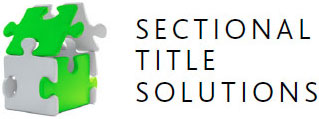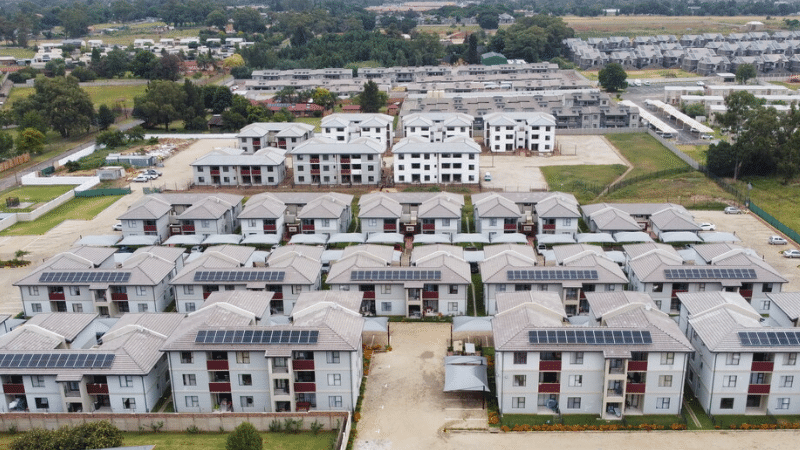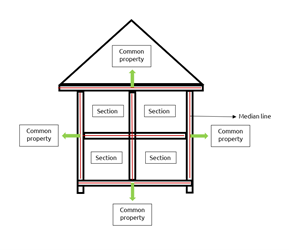Shared spaces, shared costs – who is responsible for maintenance and repairs in sectional title?
In well-known Home Box Office (HBO) series, Game of Thrones, and the related novels by George R.R. Martin, characters Jon Snow and Maester Aemon often talk about the Wall’s importance in protecting all of Westeros. The Wall is not just the responsibility of the Night’s Watch; it protects the entire realm.
Just like the Wall in the North that safeguards all of Westeros, the upkeep of shared spaces in sectional title schemes is essential for the benefit of the entire community. Everyone, from owners to the body corporate, has a role to play in maintaining these spaces for the common good.
Buying a property can be both an exciting and nerve-racking experience for any prospective owner, especially first-time buyers. For most people, this will be one of the biggest single investments they will make within their lifetime.
When buyers purchase a unit within a sectional title scheme with an established body corporate, it often comes with amenities which can include items such as 24-hour security, swimming pools, shared gardens, and other recreational areas, as well as solar and battery storage facilities. Owners are often unaware of who is responsible for the maintenance and repair costs for a particular item should something go wrong, which we aim to clarify in the article below.
Firstly, it is important to note the legislation that governs sectional title schemes within South Africa and that will be referenced in this article. This legislation includes the following:
- The Sectional Titles Act (“STA”) and the Regulations thereto;
- The Sectional Titles Schemes Management Act (“STSMA”) and the Regulations thereto;
- The Prescribed Management Rules (“PMRs”) of the STSMA Regulations;
- The Prescribed Conduct Rules (“PCRs”) of the STSMA Regulations; and
- The Community Schemes Ombud Service Act (“CSOS Act”) and the Regulations thereto.
Secondly, before one looks at specific items and the question of who is responsible for the costs of maintenance and repair, one needs to understand how this legislation may apply to the different parts of a sectional title scheme.
These parts of the sectional title scheme include the following:
| PART | DESIGNATION |
| Primary Sections |
|
| Utility Sections |
|
| Common Property |
|
| Exclusive Use Areas (“EUAs”) |
|
Thirdly, it is also important to have clear understanding of the boundaries between a section (either a primary or utility section), other sections and common property, which the STA refers to as the median line. This understanding is necessary as it usually depends on what side of the median line the necessary work is required when it comes to determining responsibility for maintenance and related expenses.
Section 5(4) of the STA specifically refers to the median line as “The common boundary between any section and another section or common property shall be the median line of the dividing floor, wall or ceiling, as the case may be.” In other words when two sections share a boundary, or when a section shares a boundary with common property, the median line is considered to be the middle line between the floor, wall, or ceiling that separates them.
It may be simple to determine the median line between sections and common property by applying the above principle to the sectional plan (required to be prepared in terms of sections 4 and 5 of the STA) however confusion often arises when considering items such as windows, doors and balconies which is discussed further below.
Now that the basics have been covered – the below table provides a broad overview of the parties who are usually responsible for costs and maintenance required to be undertaken within a sectional title scheme.
| AREAS | RESPONSIBILITY |
| Foundations |
|
| Roof |
|
| Windows, Doors and Other Structures |
|
| Other Structures – Part Two |
|
| Exclusive Use Areas (“EUAs”) |
|
| Security |
|
| Pest Control |
|
| Geysers |
|
| Water leaks |
|
| Solar Panels |
|
Lastly, a prospective owner must be aware that in terms of section 3(1) of the STSMA the body corporate is required to establish an administrative fund as well as a reserve fund. And a prospective owner must also understand why levies (also referred to as “contributions”) are payable by each owner.
The reserve fund is established and maintained to cover the cost of future maintenance and repair of the common property, and the amounts required are calculated in terms of Regulation 2 of the STSMA Regulations. The reserve fund must be used to implement the 10-year maintenance, repair and replacement plan for major capital items which is required in terms of PMRs 22 read with 24(2).
A major capital item is defined in the PMRs as “wiring, lighting and electrical systems, plumbing, drainage and storm-water systems, heating and cooling systems, any lifts, any carpeting and furnishings, roofing, interior and exterior painting and waterproofing, communication and service supply systems, parking facilities, roadways and paved areas, security systems and facilities and any other community and recreational facilities.”
The amount payable by an owner in respect of the maintenance, repair and replacement plan will be specific to any particular scheme and can vary largely depending on the scheme’s major capital items, and ongoing compliance with the minimum threshold determined for the reserve fund in terms of Regulation 2 of the STSMA Regulations.
The administrative fund must be used to fund the operating expenses of the body corporate for a particular financial year and should include provision for:
- the repair, maintenance, management and administration of the common property (including reasonable provision for future maintenance and repairs);
- the payment of rates and taxes and other local municipality charges for the supply of electricity, gas, water, fuel and sanitary or other services to the building or land;
- the payment of any insurance premiums relating to the building or land; and
- the discharge of any duty or fulfilment of any other obligation of the body corporate.
A prospective owner will only have a full understanding of what other duties and/or responsibilities there may be on a proper analysis of the body corporate’s budget but should usually include items such as managing agent’s fees and provision for legal fees for collection of outstanding levies.
Much like how the Night’s Watch stands as the first line of defence for the realm, the body corporate and unit owners must work together to uphold the integrity of their community. Just as neglecting the Wall threatens the safety of all in Westeros, failing to maintain shared spaces can undermine the value and harmony of a sectional title scheme. In both cases, collective responsibility and accountability is key to ensuring long-term protection and prosperity.
Are you in need of expert legal advice? Our specialist legal team is standing by to support and guide you with all your “complex” issues. Reach out to us!
While this article offers general guidance, it is crucial to understand that specific circumstances can significantly influence responsibility and liability within schemes. In complex or ambiguous situations, we strongly recommend reaching out to our advisory desk for tailored assistance.
Contextual factors often play a pivotal role in determining who bears the costs or responsibilities in any given scenario, and the principles discussed here, while broadly applicable, may not cover every unique case. Individual circumstances may lead to different outcomes, so personalised advice is essential for navigating these complexities effectively and reaching a fair and accurate outcome.









